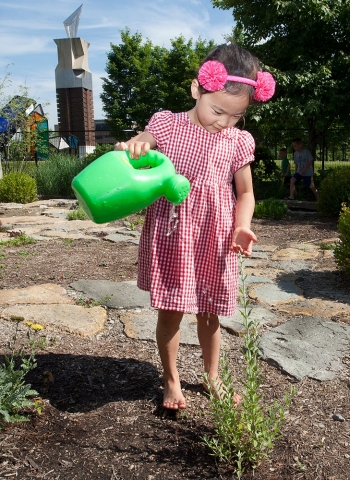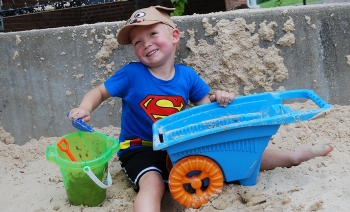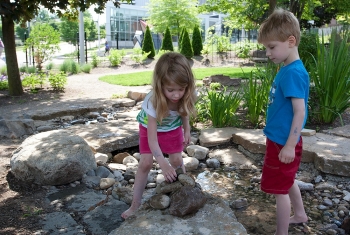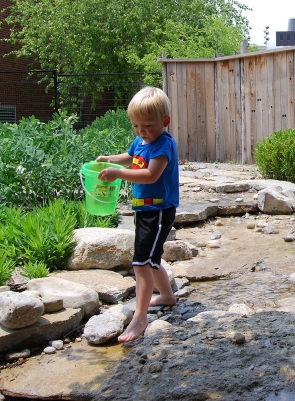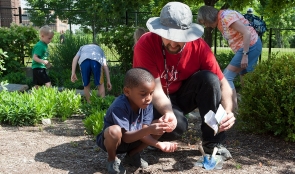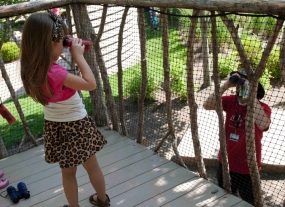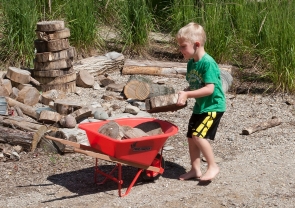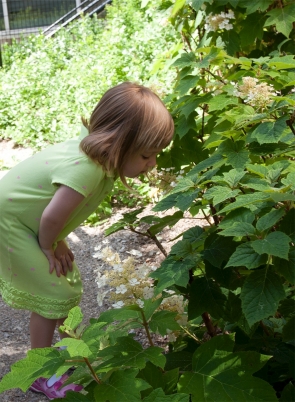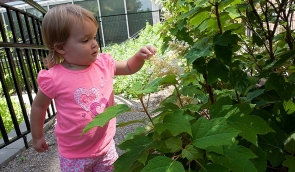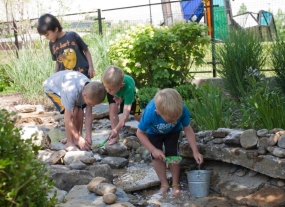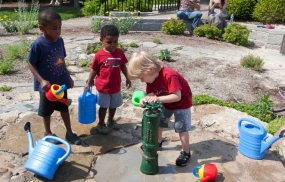Campus PlayScape lets researchers quietly observe children playing in a vanishing venue
by Dawn Fuller
Running barefoot through a wooded children’s park and wearing a red-and-white-checked dress, 5-year-old Yoo Jeong Lee smiles at a butterfly flitting by. “It looks like a monarch butterfly!” her friend Nethimi Penasivi exclaims. “In Sri Lanka, there are plenty of butterflies.”
Nearby, Abbott Hoffman-Suder and his twin sister, Lily Hope, are wading in a shallow stream, gathering rocks to build a house “for any creature ... or for any worm,” they say quite seriously. “Look, it has a worm in it already!” Abbott excitedly announces as he pulls up another rock.
This little-known nook on campus offers children 10,000 square feet of rocks, grassy mounds and trees for exploring, climbing, digging and splashing — activities increasingly foreign to youngsters today. Beckoning them to participate are a water feature resembling a small brook, a sand pit serving as a beach, a “sensory” garden, a log fort, a tunnel, plus, of course, butterflies and worms. Pint-sized guests eagerly share woodland adventures, as well as memories of their own cultures and neighborhoods.
Surprisingly, the fenced-in park, called PlayScape, is nestled in the center of UC’s urban Uptown Campus, adjacent to the north end of French Hall within feet of college students rushing to classes. For the most part, the two groups are oblivious to each other.
Birds and squirrels, however, are finding this sanctuary, giving young learners all the more reason to delight in nature and science, say educators at UC’s Arlitt Child and Family Research and Education Center, one of the oldest and most diverse preschool programs in the country and a research center within the College of Education, Criminal Justice, and Human Services.

 Past Issues
Past Issues
